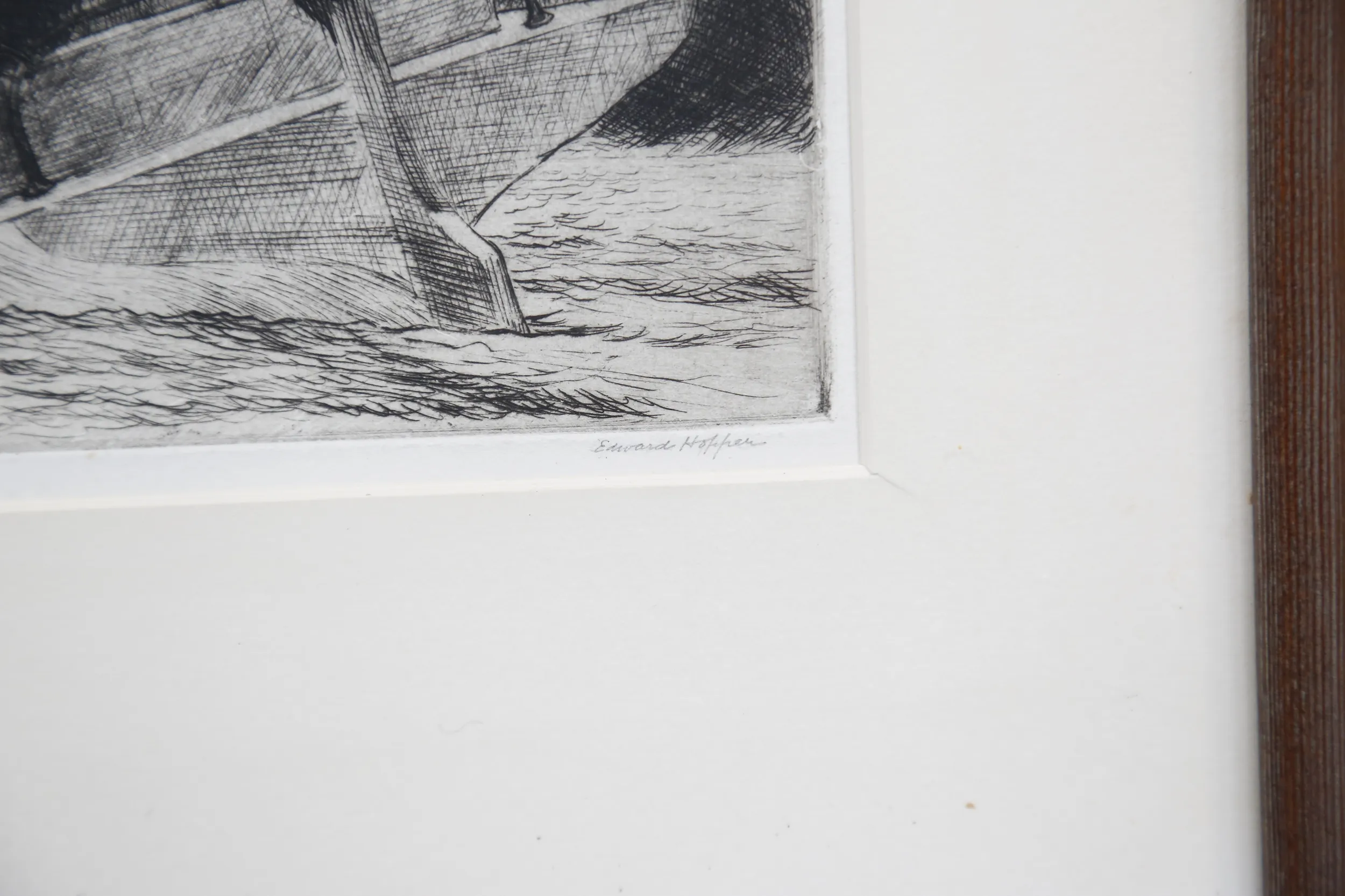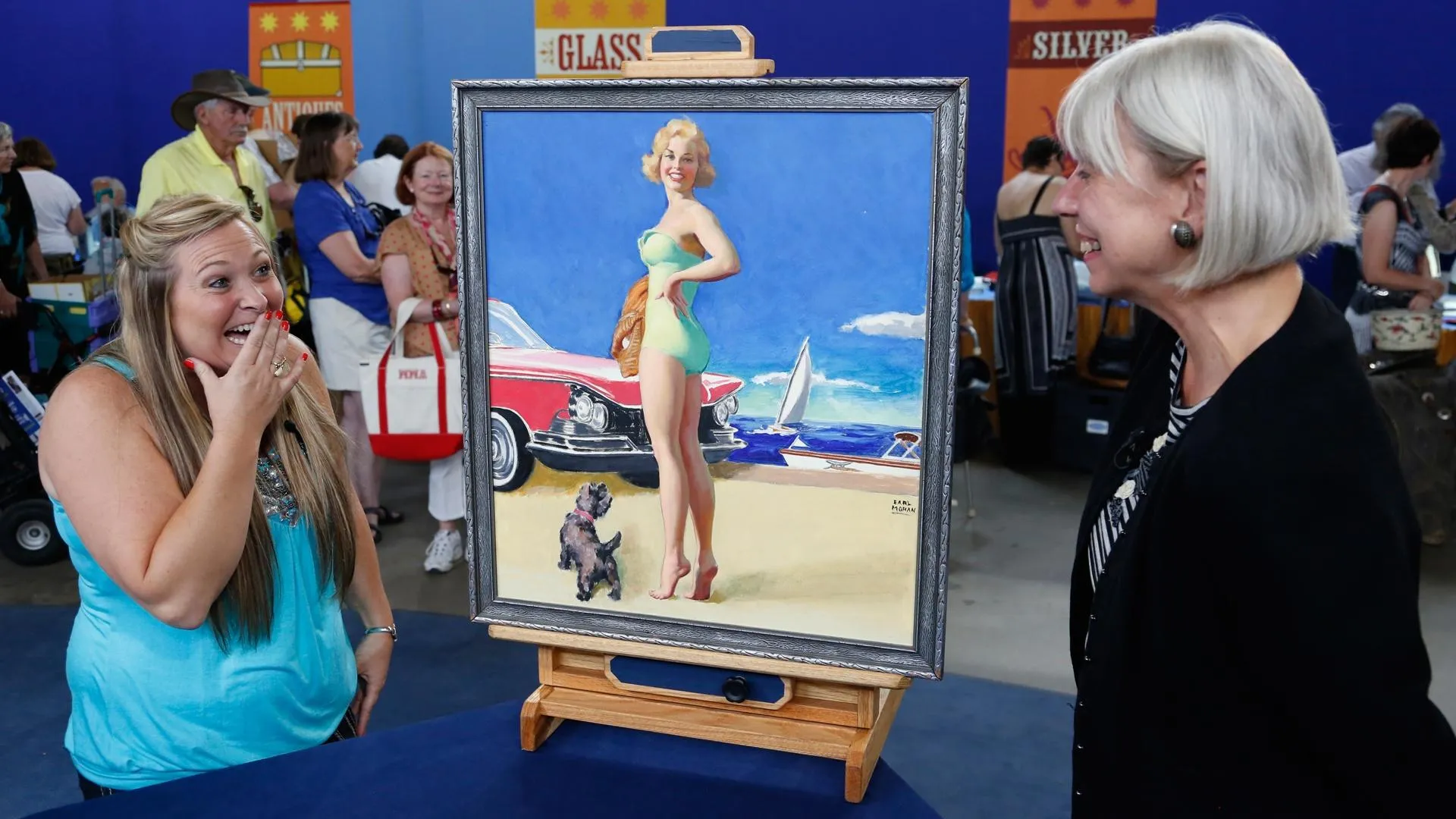GUEST: The print has been in my family for many, many years. I acquired it through inheritance.
APPRAISER: Now, were your parents collectors of this sort of thing?
GUEST: No, no. Much of the interest comes from my grandfather, who was a member of the New York Society of Etchers way long time ago and began a collection at that time that I've been fortunate enough to inherit.
APPRAISER: So this is just one of a handful of things that you grew up with around you as a youth and now you have on your wall.
GUEST: Absolutely.
APPRAISER: What do you know about it?
GUEST: Very little, other than somebody took me aside and said, "I think that's a famous artist that did that," but I never pursued it.
APPRAISER: You have an etching by the artist Edward Hopper, who is a very famous American painter and printmaker. And a lot of people know Hopper's work probably through his paintings of solitary figures alone at night in diners, in interiors in New York. He has been the subject of blockbuster solo exhibitions at museums. It's interesting because Hopper's career was very difficult from the start. He began in the early 1900s after studying in New York and traveling to Paris pursuing art as an illustrator, and oftentimes, in the early 1900s, he had to go and solicit business as an illustrator. It wasn't until 1913 at the famous Armory Show in New York that he actually had a painting exhibited that sold. That painting was also a sailing subject. A couple of years later, in 1915, Hopper turned to making etchings, and he produced the vast majority of his etched output, approximately 70 different etchings, through the 1920s. This is an etching he made in 1922 which is known by the title "The Cat Boat." He took awhile to develop his style and never really adopted any one of the art movements of the early 1900s, whether American or European. He couldn't be considered a true Ashcan artist. He's certainly somewhat of a realist artist, but not a hyperrealist. And it was really his etchings of the 1920s that started to bring him more fame and appreciation from the market. It's absolutely a beautiful impression of one of his more important etchings. There's a tiny little typed signature which is so typical of him right down here in pencil, "Edward Hopper." You'll notice that it appears as if Hopper might have erased his signature and written over it. It's not so uncommon with artists if they didn't like the way it had been signed. You see it's beautifully, richly inked. Hopper always commented on how he liked to use a very stark white paper and deep, heavy black inks and get the contrast of the two. And you have all that at work here. He printed his etchings in very small editions. He would print them as he sold them, and there's probably fewer than 25 of these known of this particular subject, so you have one of the top prints by an extremely important American artist from really what is the most important decade of his career as a printmaker. Would you hazard a guess as to what its value might be?
GUEST: Well, more than I thought originally, I think, just because of the interest that's been taken by many people, yourself included.
APPRAISER: Right, well, as an insurance value on this-- and I would suggest insuring something like this-- I would put an insurance value on it of $250,000.
GUEST: Really?
APPRAISER: Yes.
GUEST: That's more money than belongs in my living room, I think.
APPRAISER: It's a real masterpiece. And you're lucky to have that.
GUEST: Wow. Goosebumps today.











